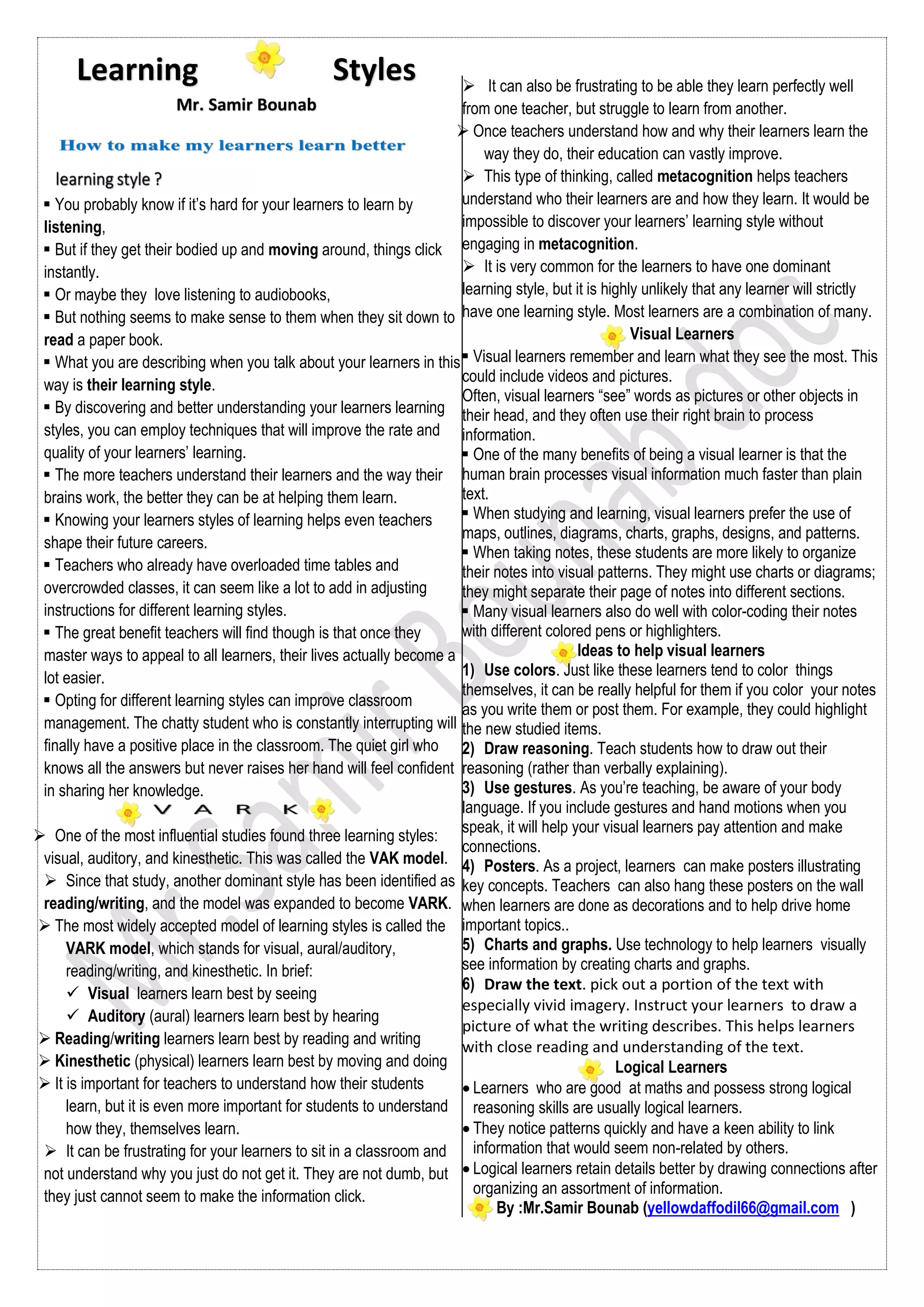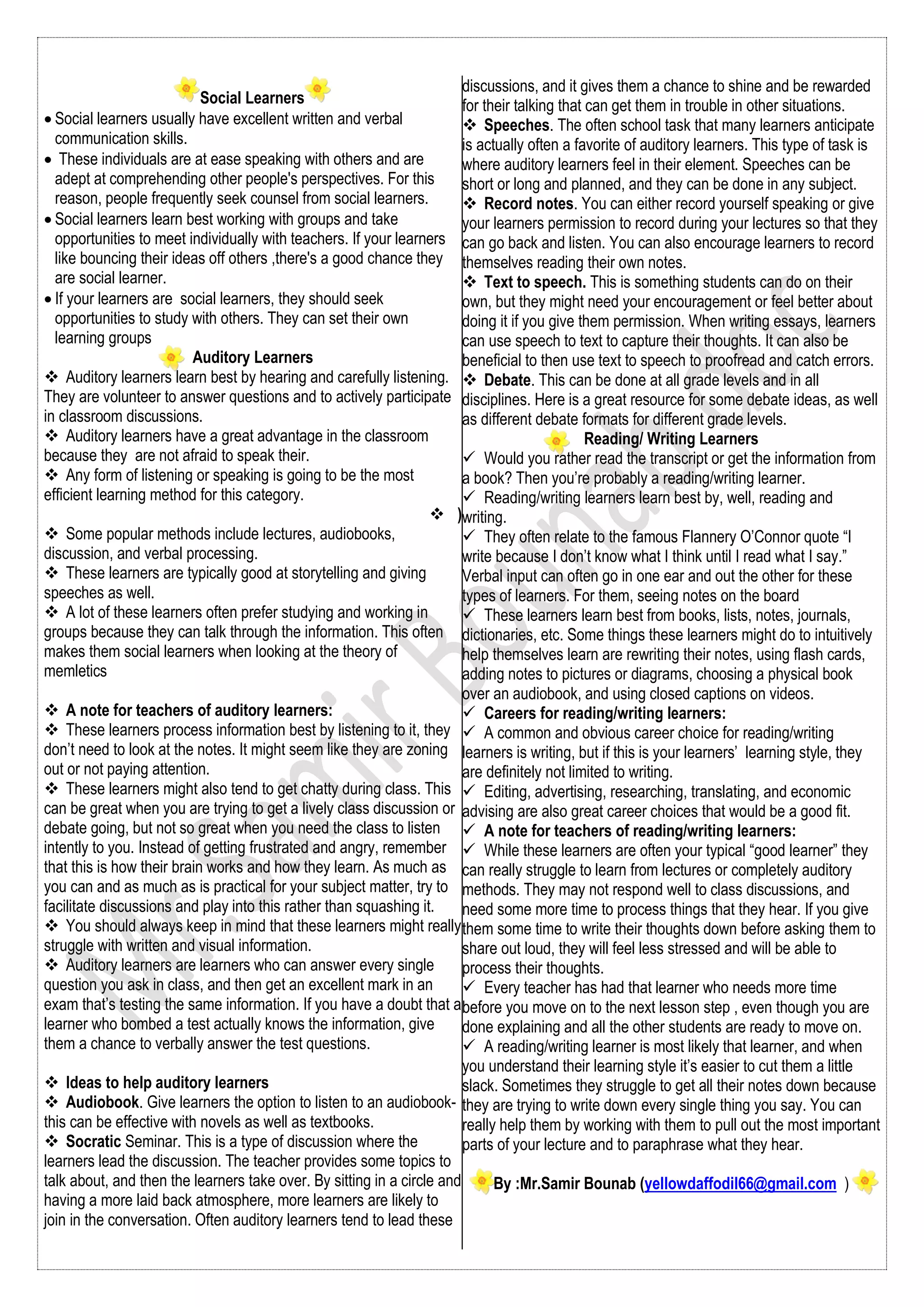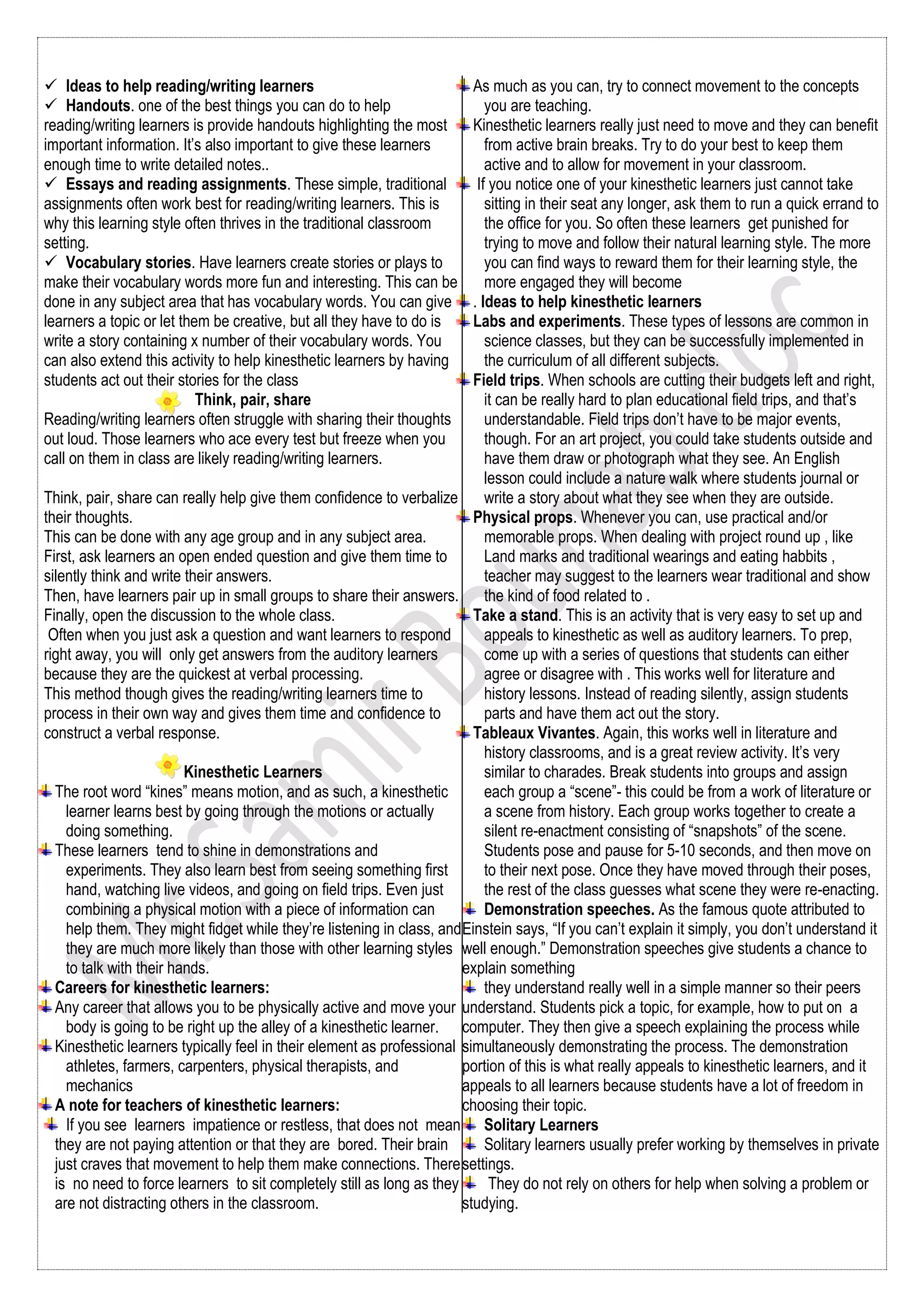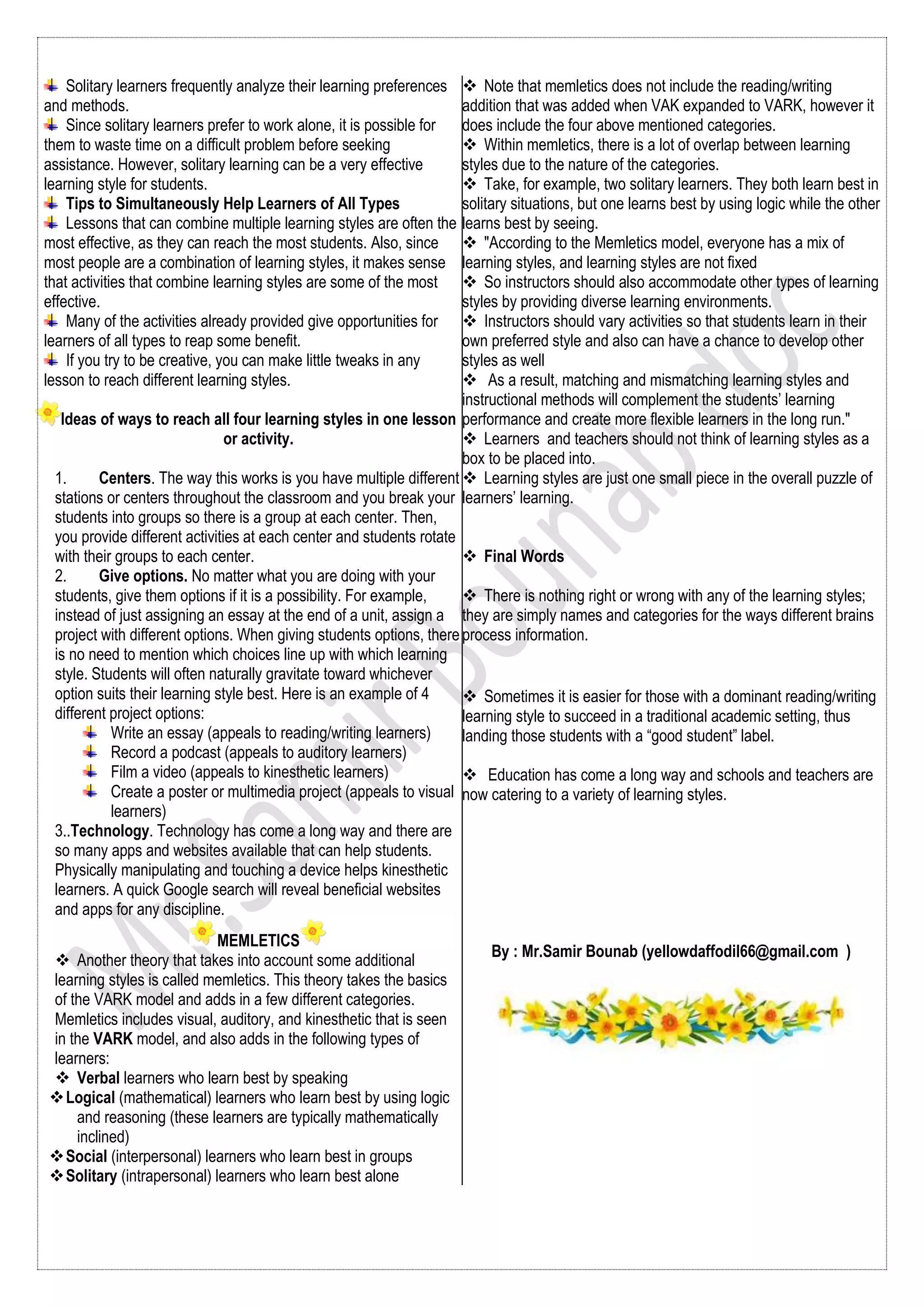This document discusses various learning styles, emphasizing the importance for educators to understand their students' individual learning preferences—visual, auditory, reading/writing, and kinesthetic—under the VARK model. It provides strategies and techniques to support diverse learners, enhancing classroom engagement and management. By recognizing and catering to these styles, teachers can facilitate more effective learning experiences for all students.



